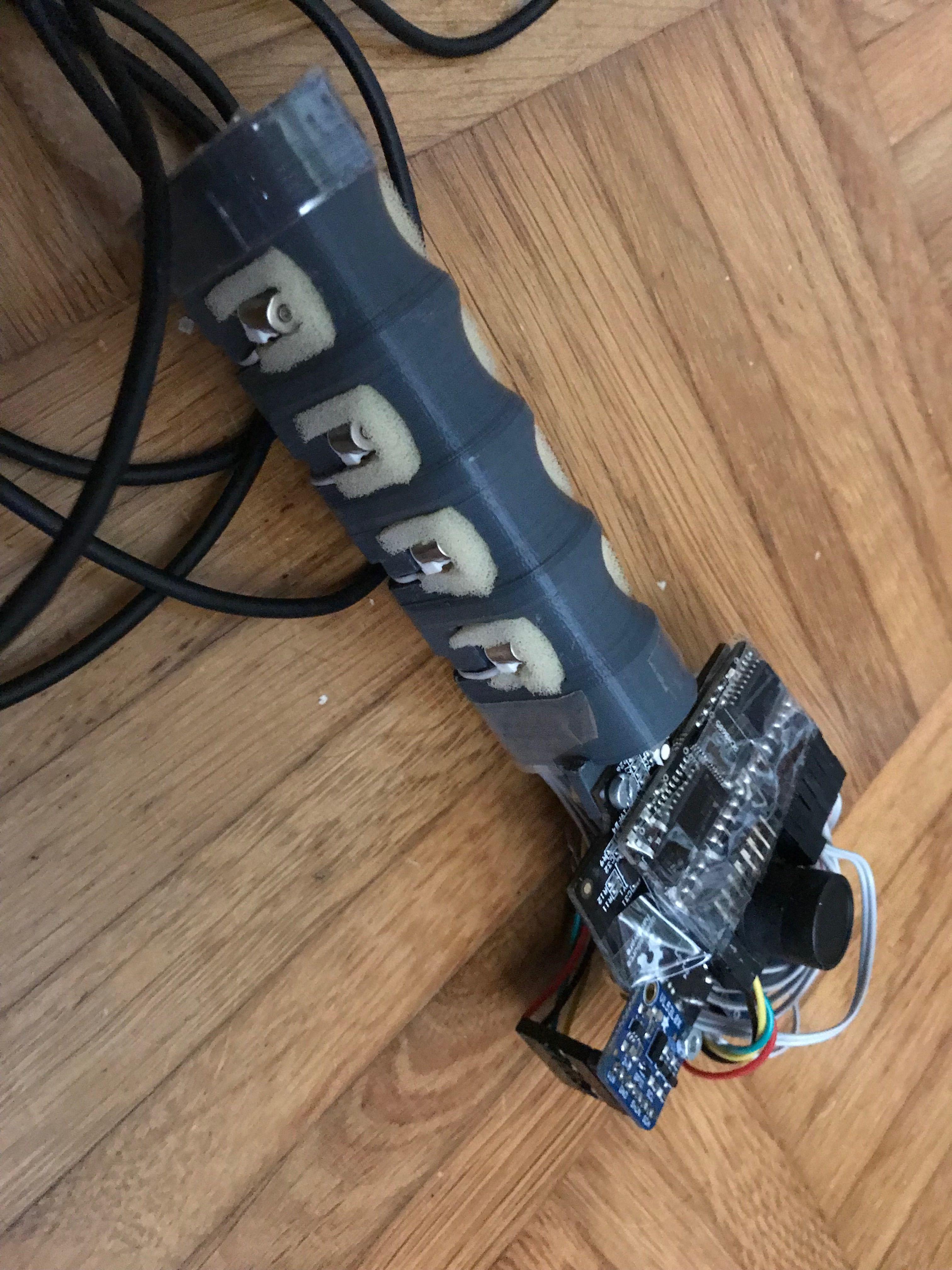HaptiCam
[Main Personal Photonics Project Page] | [Haptic Vest 1]

HaptiCam is a Haptic Guidance system for your hand. Our HaptiVision Belt should give wearer a rough haptic overview of its surrounding by mapping vibration intensity to distance to an object at a certain haptic pixel.
In this case a door will result in the same feedback as the surrounding wall, without indication that one might open it and can walk through.
If one would have an image recognition system to detect doors, it would become possible to get additional haptic hints for the door. While it might be sensory overload on the belt, e.g. by using vibration patterns, a better solution might be the use of additional body parts for feedback.
The arm or hand might be the best way, since one would like to guide the hand to the doorknob anyway.
Here we want to go for two possible solutions: A wristband on the lower arm for guidance as well as a handheld scanner with Vibration feedback in the grip. For direction input we used a pixy cam to detect color codes at the simulated doorknobs to reduce the need of real image recognition at the beginning.
As an additional benefit, one could also use the feedback system e.g. for braille, using speech to text to automatically translate it to Braille letters played on these systems.
Sensor system & Electronics
As controller we use an Arduino Nano, which is connected to the Pixy cam with a serial connection, while the haptic feedback is done with a I2C connection with one of our HaptiVision driver boards. For testing, we also added some buttons (with the color codes on top) at the Arduino Nano. The buttons consist of relative big, color covered laser cut sheets with 4 SMD buttons in parallel in the edges to simplify testing if one is correctly guided to an color code.
Modified code for the Arduino for each system (by Lukas Ossmann) are attached, as well as the design files.
HaptiGlove

On the wristband we attached 16 vibration motors in a 4*4 grid, with 4 cm distance in between. For covering up the driver board, camera and Arduino, we covered everything into an Nintendo Powerglove, just because i love the powerglove, its so bad :)
HaptiCam
More interesting for production was the handheld scanner. It has the disadvantage that the hand will be occupied, but has the advantage that vibration motors are exactly positioned at the fingers. This allows to get an absolute position and therefore better direction clues as well as braille letter recognition.
Mayor problem is the vibration decoupling between each motor. They are therefore inserted into small holes within the side of the grip, with foam around ist to prevent coupling to the housing, without foam on the outer side (connection to the fingers).
Nano and Pixy Cam are mounted on top.


